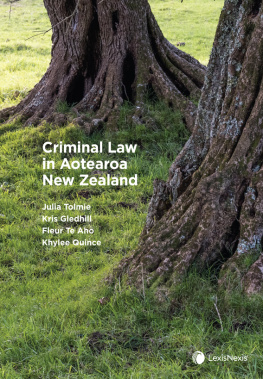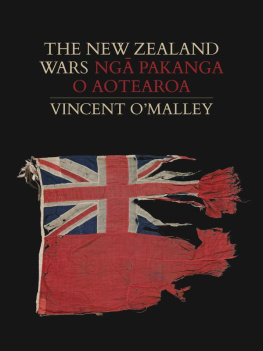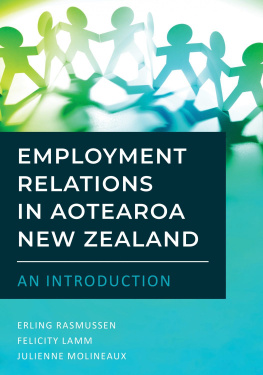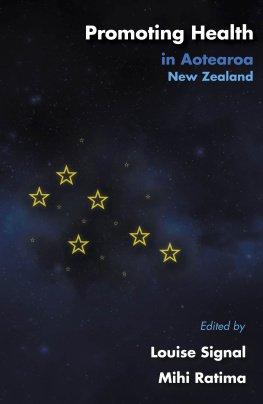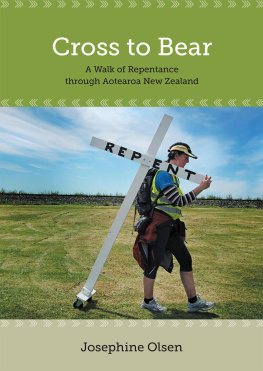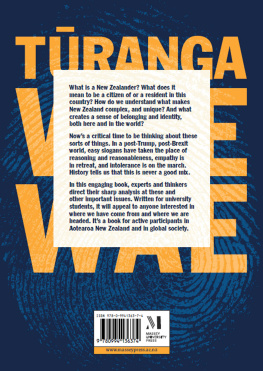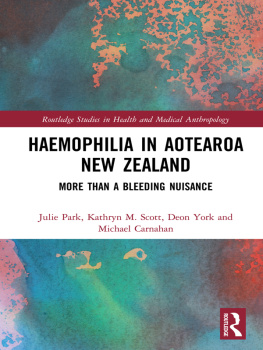First published 2013
Text copyright the authors as named
Volume copyright Otago University Press
The moral rights of the author have been asserted.
ISBN 978-1-877578-49-6 (print)
ISBN 978-1-927322-21-5 (EPUB)
ISBN 978-1-927322-22-2 (Kindle)
A catalogue record for this book is available from the National Library of New Zealand.
This book is copyright. Except for the purpose of fair review, no part may be stored or transmitted in any form or by any means, electronic or mechanical, including recording or storage in any information retrieval system, without permission in writing from the publishers. No reproduction may be made, whether by photocopying or by any other means, unless a licence has been obtained from the publisher.
Publisher: Rachel Scott
Editor: Vanessa Manhire
Design/layout: Fiona Moffat
Index: Diane Lowther
Ebook conversion 2015 by meBooks
Front cover: Children enjoying the playground at Danseys Pass Holiday Park.
Foreword
This is a book about children. It will be of value to parents, family, whnau, professionals and any combination of these. The editors, Nancy Higgins and Claire Freeman, together with the researchers who have written with them, ask what it is that we know about childrens lives in Aotearoa New Zealand and what it is that children know of us and of a world they are active in forming.
Some chapters closely examine the sociopolitical contexts in which childrens lives are embedded. Others give us access to how children experience their homes, classrooms and communities, how they read and interpret their relationships with adults and with one another, and what is good and not so good in their interactions with people and places. What the children have to say is insightful and sometimes deeply moving. It suggests that what we think we know about children may not represent the perceptions and experiences that children themselves live, enjoy, fear, share and keep secret each and every day.
There are a range of professional groups law, health, social services, education that would see understanding children and the worlds in which they live as an essential basis for the theory and practice of their field. In education, for example, the notion of pedagogy embraces a concern for the well-being of children. It means that in order to teach, we should as best we can strive to relate to children and to understand the world in which [our] students live (Freire, 1998, p. 72). This is not to frame the teacher as a social worker or political activist, although some may choose aspects of those roles as part of the teaching role. They will understand that classroom interactions are imbued with the power differentials of the wider society and so can involve experiences of both justice and injustice. A contextual model of pedagogy, therefore, requires that we take children and research about children seriously, which is what this very good book does.
The researchers in this collection of studies have examined the environments that adults create for children: environments determined by sociocultural beliefs regarding how children are to be thought of, supported and constrained. For example, we are reminded that in the early days of schooling in Aotearoa New Zealand the classrooms were often highly regimented and included the use of a strap or cane to beat children. This seems a limited and unkind world for the child. Yet quite recently many people marched in our streets to oppose a 2007 law that regulated against hitting children and against other violent acts that some adults use to control and constrain younger people.
These protests were not successful and this law has not been changed. In this and in other ways we now acknowledge that, in words at least, children are citizens with autonomy and rights identified by international agencies and United Nations conventions. However, as we can read in this book, it is often the case that these rights are not readily enforceable and that in Aotearoa New Zealand we have some of the worst levels of child poverty and child health in the OECD (Organisation for Economic Cooperation and Development) countries, along with exceptionally high rates of child suicide. So how much has changed since children were held silent in classrooms and physically abused for poor spelling or for speaking Mori? As this book records, a childhood of hardship and deprivation in a context of high levels of inequality is not an environment of social justice for more than a quarter of our children, who are denied the economic and social resources necessary for health and enjoyment and for a fair chance in the world of adulthood.
Mori children face particular challenges in this regard. In 2004, the then leader of the National Party, Don Brash, gave a speech at Orewa in which he described Mori concerns over stolen land as the Treaty grievance industry; claimed that Mori gained special privileges from government funding based on race; and suggested that there were no full blooded Mori, a reference to the idea of blood purity that forms a basis for eugenics. In an editorial, the Sydney Morning Herald said that this speech was playing the race card and that the liberation of racist views is not always easy to reverse (Editorial, 2004, p. 12). That would seem to be the case, and such views, which have proven highly popular, are now present in mainstream print and broadcast media. What must it be like for Mori children to hear their identity and culture dismissed day after day? What are the implications for all children when the expression of such views is normalised?
In his book based on documents from within the National party, Nicky Hager (2006) shows that those writing the Don Brash speech knew that their claim of Mori privilege could not be sustained because, as one said, Mori are generally at the bottom of the heap (p. 93). Just how serious the overall situation for Mori has become under both Labour- and National-led governments as they pursue their neo-liberal agenda is evident in research by the Ministry of Health and the University of Otago (2006). A basic measure of the well-being of a group of people is their mortality, that is, how long they live. The Ministry of Health and University of Otago research covering the years 1981 to 1999 shows that in this period, which they describe as the decades of disparity, Mori showed a decline in life expectancy in comparison with non-Mori. At the beginning of the period (1981), Mori were living six to seven years less than non-Mori. By 1999 the difference was eight to nine years. The data showed that neither socio-economic status nor lifestyle factors, such as diet and smoking, could account for this discrepancy. The researchers concluded that the serious decline in Mori well-being over these years reflected a racialised social order of economic and health inequality (p. 4).
In terms of our ideas about childhood and support for families, this research holds significant implications for Mori children whose lives in our settler society are the focus of several chapters in the present book. But there are also implications in this data for all of our futures in terms of the kind of society that we wish to be.






